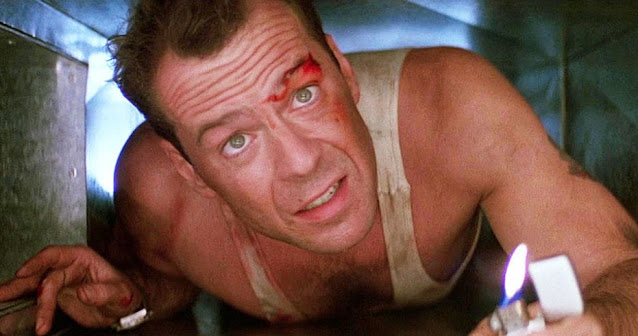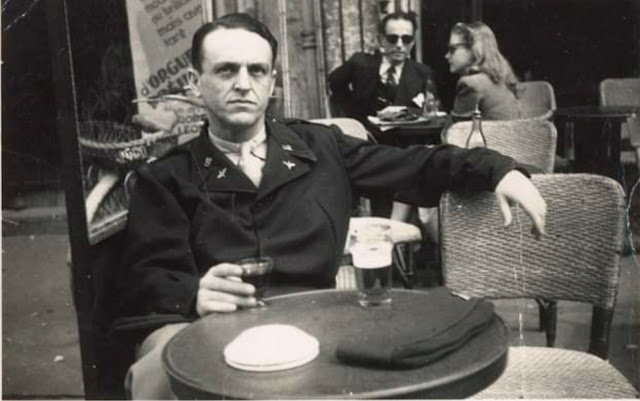The Making of the Original "Cape Fear"
Martin Scorsese’s 1991 film Cape Fear was a remake of the 1962 classic thriller starring Robert Mitchum and Gregory Peck. Peck also produced the original film. “At the time, I had a production company that had produced several pictures, and I had been co-producer on several,” said Peck. “It was the coming thing. Burt Lancaster and Kirk Douglas had also begun to produce their own pictures. I forget who came up with the novel by John D. MacDonald called The Executioners. But it seemed a good thriller – it offered several good acting parts – and we decided to go into the business of making a thriller.”
Director J. Lee Thompson recalled, "Cape Fear was offered to me by Greg Peck, who owned the movie rights to The Executioners. This was while I was directing him in The Guns of Navarone.” Gregory Peck explained, “I had liked Lee a lot on The Guns of Navarone, particularly because he took over on about five days’ notice. Carl Foreman, the producer, had had a falling-out with the original director and sent him packing. Lee was somewhere in England, and we’d looked at a lot of pictures that he’d made. He seemed to have an eye for action film, and at the same time, a good eye for character. He was good on the quiet scenes and on the noisy scenes. It was just amazing the way he took over, and we all admired him for it. So I thought he was just the fellow for Cape Fear.”
Thompson was thrilled at the opportunity to direct Cape Fear. As he recalled, “James Webb, who wrote the script, came over to London and we went through his script, and we worked on it again in Paris. I just worked on it purely from a director’s point of view, trying to make each scene a little more suspenseful. You know, I’ve studied Hitchcock… and when I come to a scene, I can’t help but I wonder how Hitchcock would do it. Hitchcock almost always liked to let the audience know and the person on the screen not know.”
“And then I came over to L.A. and made my first American film," Thompson added. “The Executioners was now called Cape Fear, a title that Gregory Peck made up.”
“The Executioners, I thought, was a kind of a turn-off of a title.” Peck explained. “And I had the idea that geographical titles were sometimes successful – you know, like Casablanca, Dodge City. It occurred to me to run my finger up the Atlantic coast from Florida on north and look for an interesting title, and I was lucky enough to discover Cape Fear – the Cape Fear River in North Carolina. And it seemed extremely appropriate for our story.”
J. Lee Thompson was thrilled that Cape Fear was able to attract such as strong cast. "I realized at the start that this was a fairly ordinary thriller and that it would have to depend a lot on mood and getting the right characterizations, the right actors to portray the lead parts. My vision was to make it moody and to emphasize the characterizations. Greg was extremely unselfish, because when he gave me this script he said that the part of ‘Cady’ would of course steal every scene, and he put up a wonderful performance against Robert Mitchum. Of course, Robert Mitchum excelled himself.”
Thompson was thrilled to work with Mitchum, who was one of his heroes. “I had the good fortune of having him in a great role,” Thompson said. “He did warn me right from the start – he said, ‘This part is a drunk, a rapist, and a violent man. And I live my parts.’ Which was a sort of warning that we might have some stormy passages during the making of the film. That was fine, and we did have some stormy passages.”
Much of the film was shot in 1961 at Universal Studios, but the crew also traveled to Savannah, Georgia for three or four weeks to capture some authentic southern exteriors.
“We had – I was going to say ‘difficulty,’ but it wasn't really difficulty,” J. Lee Thompson explained. “But the truth is that Robert Mitchum completely lived the part of ‘Cady,’ and you know, he was quite a handful on the set. At one time, he was sentenced to a chain gang in Savannah, and he hadn't forgotten that. He was very hostile in the surroundings, and this helped in the part. His inner rage came out, and it was very interesting to work with a man who was so into the part.”
According to director Thompson, upon arriving on location the first day, Mitchum started singing, "How dear to my heart are the scenes of my childhood, when fond recollection presents them to view." When Thompson asked Mitchum why he was singing that song, the actor explained to his director that at the age of 16, he’d been arrested for vagrancy in Savannah and spent six days on a chain gang before escaping. "These are the scenes of my childhood, man, and they are very dear, very dear indeed, to my heart," Mitchum said.
Nearly 40 years later, J. Lee Thompson still vividly recalled his star’s seething anger. “Mitchum felt a bitterness against the whole place – against the community, and he had a big chip on his shoulder. So he was always ready to explode, which was great for the picture. I mean, I didn’t try to stop that.”
Director J. Lee Thompson struggled with the studio over the ending. "I was in favor of Peck actually killing him, and that the film would end right there in the swamp,” said Thomson. “And of course at that time… the studio was anxious for a more happy ending, and so in the end we all went along with that."
“In those days, you had meetings with the censor,” recalled Thompson, “and I met with him and he looked at the script and said, ‘There are certain areas that are dangerous. There must be no suggestion that Cady is really out to rape the girl.’ Which was a very tough one right from the start. And then he said, ‘You must be careful of the violence – violence to women, violence in any form.’”
“Anyway, I went ahead and made the film,” said Thompson, “and the next step in censorship is that the censor sees the film. And obviously he looks very carefully at those areas which he had warned you about. In our case, he said, ‘Mitchum looks too lasciviously at the girl.’ There was a scene on the pier where he saw the girl in a rowboat below him, and he looked at her, according to the censor, ‘too lasciviously.’ Well, actually I thought it was just a very good Mitchum look… So it was a tightrope that we walked.”
Director J. Lee Thompson thought that remaking Cape Fear wasn’t a bad idea. “If anyone had to remake Cape Fear, Martin Scorsese was the man to do it,” he said. “The fact that it was Martin Scorsese doing it pleased me, because he is my favorite director. He had all the liberties that I didn’t have. In this day and age, I could’ve really gone for it, without the censor worrying me. I think it was a good enough film to do again, to show it to a newer audience.”
Gregory Peck agreed. “I remember that Bobby De Niro said, ‘You know, we want to do this as an hommage to your version of Cape Fear.’ Marty was enthusiastic, and so was I. I couldn’t find anything wrong with the idea of doing a remake. It was a form of flattery, in fact.”
Francis M. Nevins, “Cape Fear Dead Ahead: Transforming a Thrice-Told Tale of Lawyers and Law,” Legal Studies Forum, 2000
Cape Fear (1962) DVD: “The Making of Cape Fear” Featurette
“Hollywood Tough Guy, Robert Mitchum, Dead at 79,” CNN.com, 7/19/99






Comments